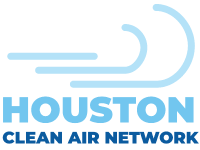

When speaking about ozone prevention, it is important to recognize that there are ways through which ozone can be managed; the first, and most visible, is attempting to reduce the level of ozone in the atmosphere by controlling the amount of chemicals that we produce. Efforts in this area may include lobbying for tighter air quality standards as well as pollutant control technologies implemented by industry. When effective, these efforts can greatly reduce the ozone concentration in the atmosphere. However, because ozone is formed through several different chemical processes and from chemicals emitted by many different sources, this is very difficult.
The second way ozone is managed, and the focus of this website, can be thought of as personal protection whereby individual ozone exposure is actively limited. Such efforts focus on mitigating the effect of pollutants already in the air by managing exposure at an individual level. This can be accomplished by routinely monitoring air quality information and forecasting sites (such as this site) as well as participating in educational outreach activities. Personal protection efforts have the advantage of being tailored to the individual user—an important action considering that, according to hospitalization data on more than a million children between 1995 and 2000, each ppb increase in ozone concentration increases the risk of asthma hospitalization by 22 percent. (source)
Suggestions for high ozone days
Exercise indoors or early in the day when ozone levels are lowest. As the day progresses and the temperature rises, ozone levels also get higher.Stay away from high-traffic areas. Don’t go walking along the freeway or places where cars tend to idle. Keep in mind that living in a rural or suburban area doesn’t necessarily protect you; ozone related to vehicle emissions can drift hundreds of miles.Use ozone-reducing air filters indoors to control the ozone entering your home, although on high-alert days you should keep the doors and windows closed as much as possible.
